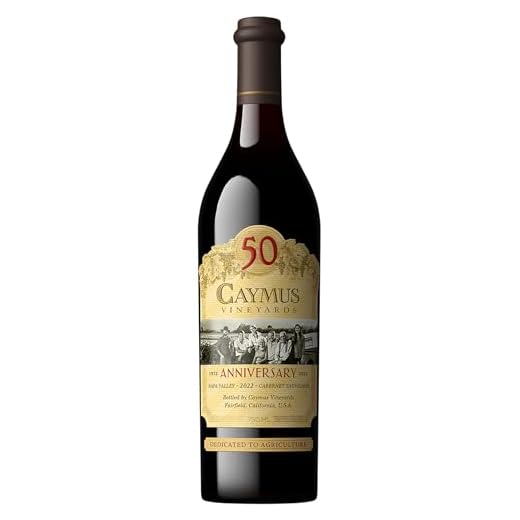



For those experiencing digestive discomfort, it’s advisable to limit intake of fermented grape beverages. Numerous individuals report exacerbation of symptoms after consumption. Observations indicate that specific compounds in these drinks may trigger irritation in the esophagus and stomach lining.
Research highlights that tannins, histamines, and sulfites present in these beverages can contribute to heightened sensitivity. If you are prone to discomfort, consider opting for white varieties or other non-fermented options, as they typically contain lower levels of these compounds.
Additionally, be mindful of portion sizes. Consuming smaller amounts may help mitigate adverse reactions. Pairing these beverages with food can also reduce the likelihood of irritation, allowing for a more enjoyable experience without discomfort.
Ultimately, listening to your body is key. If you find that these drinks consistently lead to negative symptoms, it may be wise to seek alternatives that better align with your digestive health.
Impact of Certain Fermented Grapes on Digestive Health
Individuals experiencing discomfort from gastrointestinal issues should consider moderating the intake of specific fermented grape beverages. The alcohol content, acidity, and tannins present can exacerbate symptoms in some cases.
Here are key factors to keep in mind:
- Alcohol can relax the lower esophageal sphincter, potentially leading to increased discomfort.
- High acidity levels in certain varieties may irritate the stomach lining, contributing to a burning sensation.
- Some individuals may have sensitivities to tannins, which can also provoke digestive reactions.
Consider these strategies for better management:
- Opt for lower-alcohol options or limit portion sizes to reduce the likelihood of discomfort.
- Choose less acidic varieties, often found in regions with cooler climates, which may be gentler on the stomach.
- Pair beverages with food to buffer acidity and slow the absorption of alcohol.
Monitoring personal reactions to various types of fermented grape beverages is crucial. Keeping a detailed journal of consumption and symptoms can help identify specific triggers.
Understanding Gastroesophageal Distress and Its Symptoms
For those experiencing discomfort in the chest or throat, it’s crucial to identify the signs of gastroesophageal distress. Common indicators include a burning sensation in the chest, often referred to as heartburn, as well as regurgitation of food or sour liquid. Other symptoms may encompass difficulty swallowing, persistent cough, or the sensation of a lump in the throat.
Identifying Triggers
Monitoring dietary habits is essential to pinpointing specific triggers. Many individuals report that certain foods or beverages can exacerbate symptoms. Spicy dishes, citrus fruits, and high-fat meals are often culprits. Keeping a food diary can help in recognizing patterns and identifying items to avoid.
Managing Discomfort
Implementing lifestyle modifications can significantly alleviate discomfort. Elevating the head during sleep, avoiding large meals before bedtime, and maintaining a healthy weight are practical steps. Additionally, seeking professional advice for tailored treatment options may provide further relief.
How Red Wine Affects Stomach Acid Production
For those who experience discomfort after consuming fermented grape beverages, it’s essential to understand how these drinks influence gastric secretions. Alcohol can stimulate the stomach lining, leading to increased production of digestive fluids, which may exacerbate sensations of heartburn or discomfort in susceptible individuals.
Additionally, certain compounds found in this beverage, such as tannins and sulfites, might contribute to irritation of the esophagus and stomach. These elements can provoke inflammation, heightening the likelihood of experiencing symptoms related to excess gastric fluids. Choosing lighter varieties or consuming smaller amounts may mitigate adverse effects.
Hydration plays a crucial role; ensuring adequate water intake can help dilute the impact of these beverages on the digestive system. Pairing these drinks with food can also buffer their effects, providing a more balanced experience and reducing the risk of discomfort.
Monitoring personal reactions and adjusting consumption patterns accordingly is wise. Keeping a food diary might reveal patterns that help identify specific triggers, allowing for informed choices in the future.
Comparing Red Wine with Other Alcoholic Beverages
Choosing between various types of alcoholic drinks can significantly influence digestive comfort. Each beverage has unique characteristics that affect stomach function differently. Here’s a breakdown of how different drinks stack up against each other.
| Beverage Type | Impact on Stomach | Alcohol Content | Potential Triggers |
|---|---|---|---|
| Red Wine | Moderate | 12-15% | Tannins, acidity |
| White Wine | Lower than red | 11-14% | Lower tannins |
| Beer | Moderate to high | 4-8% | Carbonation, yeast |
| Spirits (e.g., whiskey, vodka) | High | 35-50% | High alcohol content |
| Cocktails | Varies | Varies widely | Mixers (sugar, citrus) |
When I compare beverages, I focus on how they interact with the digestive system. For example, spirits tend to be harsher due to high alcohol levels, which can irritate the stomach lining more than lighter options. Beer, especially carbonated varieties, can lead to bloating and discomfort due to gas buildup.
White options generally present fewer challenges for digestion than their darker counterparts. However, individual tolerance varies, and experimenting with personal limits is essential. Always pay attention to your body’s signals when enjoying different drinks.
For those sensitive to digestive issues, selecting lower-alcohol options or lighter beverages may provide a more comfortable experience. Pairing choices with food can also mitigate discomfort, as certain dishes can buffer the effects of alcohol.
Identifying Personal Triggers: Is Red Wine One of Them?
Understanding individual responses to various substances is crucial for managing discomfort. To determine if this particular beverage is a trigger, keep a detailed food and drink diary. Document everything consumed along with any symptoms experienced afterward.
Monitor Symptoms
Pay attention to patterns in your diary. If you notice discomfort consistently following the consumption of this beverage, it may be linked to your symptoms. Take note of factors such as the type of food paired, portion sizes, and time of day.
Consult Professionals
Engaging with a healthcare provider for personalized advice is beneficial. They can offer insights based on your health history and may suggest tests to identify sensitivities. Professional guidance can help tailor dietary choices effectively.
Consider experimenting with alternatives. Trying different types of beverages might reveal options that do not provoke discomfort. This process allows for a better understanding of personal limits and preferences.
Lastly, moderation is key. If you find that this drink does not consistently lead to issues, enjoying it occasionally, in small amounts, may be feasible. Always listen to your body and prioritize comfort in your choices.
Recommendations for Enjoying Red Wine with Acid Reflux
Opt for lighter varietals, as they typically contain lower levels of tannins and acidity, which can minimize discomfort. Pinot Noir and Gamay are excellent choices for those sensitive to stomach irritation.
Limit consumption to a small glass, ideally 4-5 ounces, to avoid overwhelming your system. Pair your selection with food to buffer the effects on your digestive tract; foods rich in fiber or healthy fats can help.
Timing and Temperature
Enjoy your drink earlier in the evening, allowing ample time for digestion before bedtime. Serve at a slightly cooler temperature, around 55°F to 60°F, which can make the experience smoother and less harsh on your stomach.
Mindful Sipping
Take small sips and savor each taste. This approach can enhance enjoyment and reduce the likelihood of overindulgence, which is crucial for anyone prone to discomfort. Pay attention to your body’s signals–if you notice any signs of distress, it’s wise to stop.
When to Consult a Doctor About Stomach Issues and Alcoholic Beverages
Seek medical advice if you experience persistent discomfort or symptoms such as heartburn, regurgitation, or difficulty swallowing after consuming alcoholic beverages like Cabernet or Merlot. A healthcare professional can evaluate your condition and recommend appropriate tests or treatments.
Recognizing Warning Signs
Be attentive to the following indications that may necessitate a doctor’s visit:
- Frequent episodes of burning sensations in the chest or throat.
- Unexplained weight loss.
- Nausea or vomiting, especially if it includes blood.
- Chronic cough or hoarseness.
- Difficulty swallowing or food getting stuck.
Tracking Your Symptoms
Maintain a journal to log your food and drink intake, along with any related symptoms. This information can be invaluable for your healthcare provider in identifying patterns and potential triggers.
If you’re looking for a delicious meal to pair with your favorite drink, consider exploring how to cook elk steak in a skillet. A well-prepared dish can enhance your dining experience while being mindful of any dietary restrictions.
Alternatives to Red Wine for Those Prone to Acid Reflux
Opt for white varieties such as Chardonnay or Sauvignon Blanc. These options tend to have lower acidity levels, making them easier on the stomach. Sparkling water infused with fruit is another excellent choice, providing a refreshing experience without the harshness of fermented beverages.
If you’re looking for something completely non-alcoholic, consider herbal teas like chamomile or ginger. These can soothe the digestive system and help alleviate discomfort. Light beers made with lower hops can also be a suitable alternative, as they generally have a milder effect on the digestive tract.
For a more unique experience, try fruit-based cocktails that use pureed fruits and mixers like club soda. These drinks can be flavorful and satisfying without triggering sensitivity. If you enjoy the complexity of flavors, consider experimenting with non-alcoholic wines made from various fruits, which mimic the taste profile without the adverse effects.
Lastly, always pay attention to how your body responds. Keeping a food and drink diary can help identify which alternatives work best for you. Enjoying flavorful options that align with your preferences is key while avoiding discomfort.









